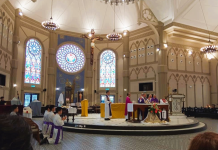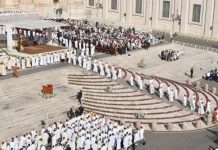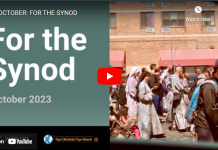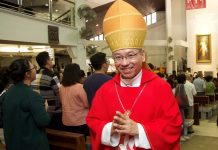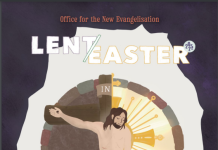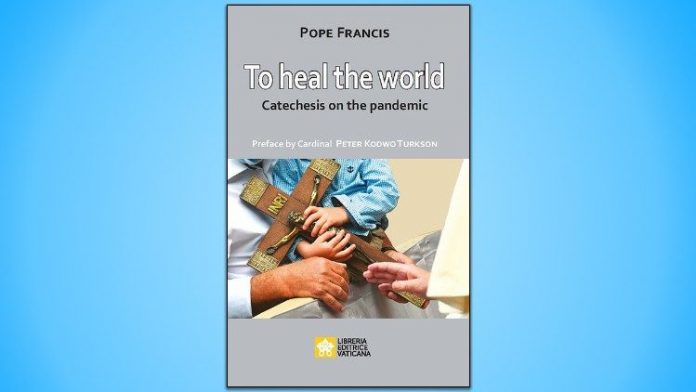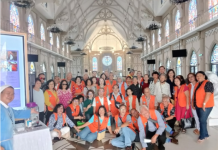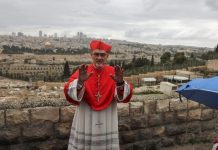By Debora Donnini
VATICAN CITY — In To Heal the World Pope Francis offers an invitation to join him on a “pilgrimage” inspired by the Gospel, with the theological virtues of faith, hope and charity as “beacons”. It is a journey that will help us to deal with the crisis which has highlighted our vulnerabilities, so that it may become an opportunity to build a more just world where we care of one another.
It is in this spirit that Cardinal Peter K. Turkson, Prefect of the Dicastery for the Promotion of Integral Human Development, authored the book’s preface. The volume presents the words of Pope Francis on the coronavirus pandemic spoken during his general audiences from August 5, 2020 to September 23, 2020. The purpose of the publication published by LEV can be found in the Pope’s own words pronounced at the conclusion of the general audience on August 5: “It is my desire that everyone reflect and work together, as followers of Jesus who heals, to construct a better world, full of hope for future generations”.
Healing and consolation
Cardinal Turkson recalls the days of greatest suffering for Italy due to Covid-19 between March 21 and 26. He also remembers March 27 when Pope Francis held a special moment of prayer in front of an empty St. Peter’s Square during the lockdown. The photos captured of that prayer vigil, Cardinal Turkson note, recall that of the “suffering servant” of Isaiah who bears the despair and pain of the world. His words on the international crisis expressed the world’s “collective anxiety” but also recalled the image of the “high priest” who represents the human family before God, seeking healing and consolation in the face of bewilderment.
Crises as a time to begin again
The task of someone who consoles others is explained in the Wednesday catechesis dedicated precisely to healing a world shaken by the pandemic. Cardinal Turkson points out that during the pontificates of Benedict XVI and Pope Francis, the world has gone through three crises: the financial crisis of 2008-2009 and the “current twin crises of climate change and Covid-19.” These crises also present challenges to make changes for the better. As Benedict XVI challenged in 2008, a crisis becomes an opportunity for “new approaches” and exhorts us to face difficulties with confidence rather than with resignation.
Ways to deal with the crisis proposed by Francis
The preface then highlights the nine Wednesday discourses of that period. They indicate that the way out of the crisis for a better world is “a common endeavor”. It proceeds from the introductory catechesis that presents Jesus as the healer, to the second one on healing relationships in a world where everyone is truly interconnected. His discourses touch the root of social injustice, the importance of the preferential option for the poor, healing social pandemics and countering attitudes of indifference. They also recall the universal destination of goods and how inequality is the result of unequal economic growth. Central to this journey are solidarity and empowering local people, as well as the call to put oneself at the service of building a “civilization of love” that promotes the common good at all levels. Thought is also given to the relationship with creation that must be safeguarded. It’s a new path that cannot be separated from keeping our gaze fixed on Jesus “our healer” who sends us out as those who console others.
At the conclusion of each of the Pope’s discourses, the book encourages readers to follow this path, offering points to help face the journey, by asking questions about on a personal, family and community level, looking at various themes and concrete actions to be taken.

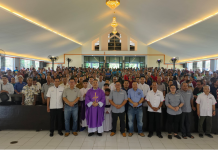
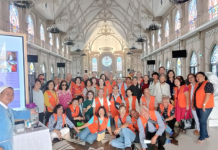





、尤金·玛格拉桑神父(Fr-Eugene-Maglasang)(前排右八)及叶祥胜神父(前排右十)于2025年1月25日在圣体堂合影。(摄影:蔡彼得).jpg)





